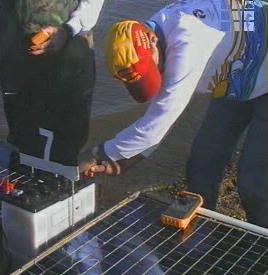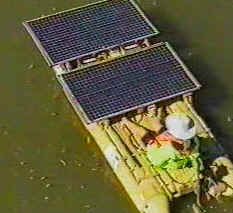COMPETITION CLASS
The
boat must fit within the combined measurements of 6 m (waterline length),
2.5 m
(height) and 2.5 m (width). Propellers may go outside these dimensions during
the race.
The
boat may be built from any material but if using solar panels can only
incorporate commercial off-the-shelf solar cells. Manufacturer’s documentation
in support of this is to be provided to the race organisers before the race.
Only
commercial off-the-shelf lead acid batteries to a maximum weight of 125 kg or a
total battery capacity not greater than 5kWh are permitted per entry.
Manufacturer’s certification of battery weight or capacity is to be provided
to the race organisers before the race. Battery specifications must be obtained
from the battery manufacturer rather than the supplier.
OPEN
CLASS GENERAL
Entries
in open class may consist of vessels utilising any prior-approved non-polluting
energy source EXCEPT human power. Approval must be sought two weeks before race
day. No other restrictions EXCEPT those in the General Rules apply.
COMMERCIAL CLASS:
SUB-CLASS
A:
All
items of equipment including the vessel, solar panels, batteries, motor unit and
propulsion unit must, on the day of the event, be commercially available ie.
over the counter or from a retail outlet. Copies of manufacturer’s/suppliers
brochures/documentation to support its commercial availability must be provided
to the race organisers before the race.
HYBRID CLASS: SUB-CLASS
B:
The
boat MUST use direct, solar, electrical or other prior-approved non-polluting
energy source in combination WITH human power to propel itself on the water.
Only one person is allowed in the craft at one time. Batteries must be
rechargeable and may be recharged by the sun.
Battery
capacity is not to exceed 5 kWh per boat, regardless of the battery type used.
Battery capacity is calculated by multiplying battery voltage by the current
capacity, giving a power output rating that can theoretically be sustained for 1
hour.
Battery
specifications from suppliers may be subject to change. As such, specifications
from the original manufacturer rather than the supplier are to be used.
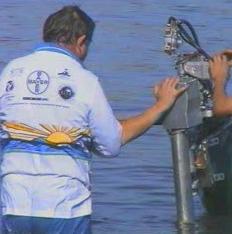
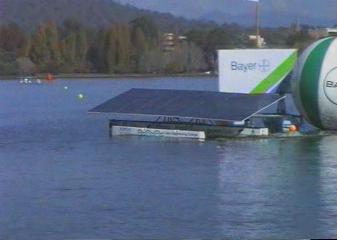
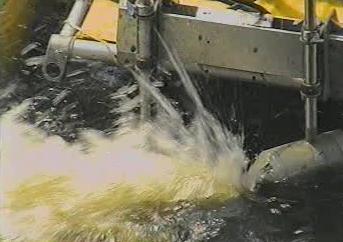
PASSENGER
CLASS: SUB-CLASS
C
As
for open class: - entries may consist of vessels utilising any prior-approved
non-polluting energy source EXCEPT human power. Approval must be sought
two weeks before race day. Passenger numbers must be within prior agreed safety
limits of relevant safety authority (home state).
The
minimum number of passengers that will be on the boat at all times during the
race must be stated. A passenger is deemed to weigh 70 kg.
SCHOOLS:
SUB-CLASS
D
As
for Open Class General: - entries in open class may consist of vessels utilising
any prior-approved non-polluting energy source EXCEPT human power. Approval must
be sought two weeks before race day. This sub-class is exempt from rule 5, ie
does not need three entrants.
INTERNATIONAL
SOLAR CLASS
Size:
the boat must fit within the combined measurements of 6 m (waterline length),
1.5 m (height) and 3 m (width). A vessel that carries no more than 50 kg mass of
batteries or other energy storage devices for every square metre of solar panel,
up to the maximum mass 125 kg.
The
following restrictions apply:
•
voltage of batteries at time of charging: up to 48 V (when storage
batteries are fully charged). The batteries may be charged before the race.
•
solar panel output: up to 480W (2500)
•
a maximum of four 1 2V storage batteries (similar to Panasonic LCR 1 2V
6.5 BP) may be fitted. Other types of battery will only be permitted for meters,
communications and bilge pumps, but these must not be connected electrically to
the storage batteries.
•
charging of solar batteries for the boat will be unrestricted, but any
other battery charging will require the permission of the race committee.

